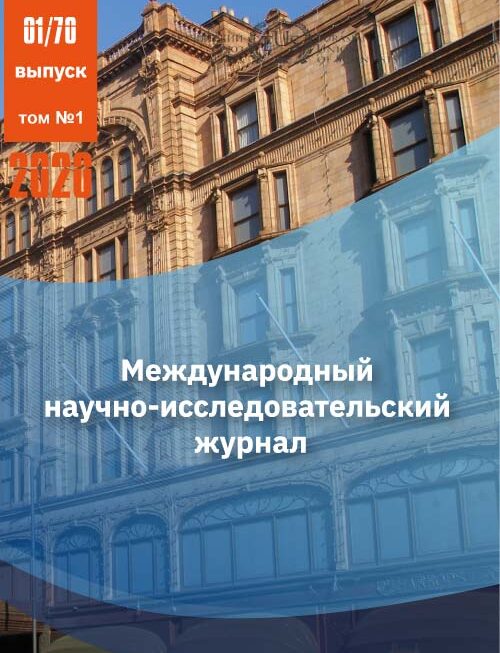DEVELOPMENT AND VALIDATION OF A METHOD FOR DETERMINING THE CONTENT OF RELATIVES IMPURITIES IN THE MEDICINAL PREPARATION AZITROMYCIN
Abstract
The drug is a semi-synthetic antibiotic, the first representative of the subclass of azalides, which is used in the complex treatment of infectious diseases of the respiratory system and ENT organs. such as tonsillitis, pharyngitis, sinusitis, laryngitis; acute chronic bronchitis, pneumonia, otitis media). Currently, there is no literature data on the determination of impurities A, B, C, E, F, G, I, J, L, M, N, O, P of azithromycin. This paper describes the development and validation of methods for determining related impurities in the drug Azithromycin by HPLC.
The aim of the study is to develop and validate a method for determining azithromycin impurities by HPLC for the analytical part of pharmacokinetic studies.
Determination of impurities A, B, C, E, F, G, I, J, L, M, N, O, P in the drug azithromycin.To identify the peaks, chromatography is performed on a high-pressure liquid chromatograph with a UV spectrophotometric detector.
The developed method was validated for the following variational parameters: specificity, checking the suitability of the chromatographic system, specificity, limit of quantitative determination, pretisionality, correctness, linearity and range, robustness.
A method for determining related impurities in the drug Azithromycin by HPLC was developed and validated. The results obtained allow us to apply the developed method when conducting an analysis to determine the content of related impurities in the drug Azithromycin
References
Azithromycin. Peters D.H., Friedel H.A., McTavish D. - Drugs, 1992, Nov;44(5):750-99. – Springer.
Azithromycin clinical pharmacokinetics, Lalak N.J., Morris D.L. - Clinical pharmacokinetics, Nov;25(5):370-4.1993 – Springer.
Quantitative thin-layer chromatographic method of analysis of azithromycin in pure and capsule forms .A. Khedr, M. Sheha - Journal of chromatographic science, 2003. URL: https://academic.oup.com.
XII Государственная фармакопея РФ - 2 часть - М: - Научный центр экспертизы средств медицинского применения, 2010 год. [XII State Pharmacopoeia of the Russian Federation - 2 part - M: - Scientific Center for Expertise of Medical Applications, 2010.]
Валидация аналитических методик для производителей лекарств. Под ред. Береговых В.В. Москва, 2008 - 132 с. [Validation of analytical techniques for drug manufacturers. Edited by. Beregovyh V.V., Moscow, 2008 - 132 p.]
Аладышева Ж.И., Береговых В.В., Мешковский А.П. Основные принципы проведения валидации на фармацевтическом производстве. Москва, 2005 г. [Aladysheva Zh.I., Beregovy V.V., Meshkovsky A.P. The basic principles of validation in the pharmaceutical industry. Moscow, 2005]
Note for guidance on validation of analytical procedures: text and methodology (cpmp/ich/381/95) ICH Q2(R1). Validation of Analytical Procedures: Text and Methodology. European Medicines Agency. 1995. URL: https://www.ema.europa.eu/en/documents/scientificguideline/ich-q-2-r1-validation-analytical-procedurestext-methodology-step-5_en.pdf
CC BY-ND
A work licensed in this way allows the following:
1. The freedom to use and perform the work: The licensee must be allowed to make any use, private or public, of the work.
2. The freedom to study the work and apply the information: The licensee must be allowed to examine the work and to use the knowledge gained from the work in any way. The license may not, for example, restrict "reverse engineering."
2. The freedom to redistribute copies: Copies may be sold, swapped or given away for free, in the same form as the original.







